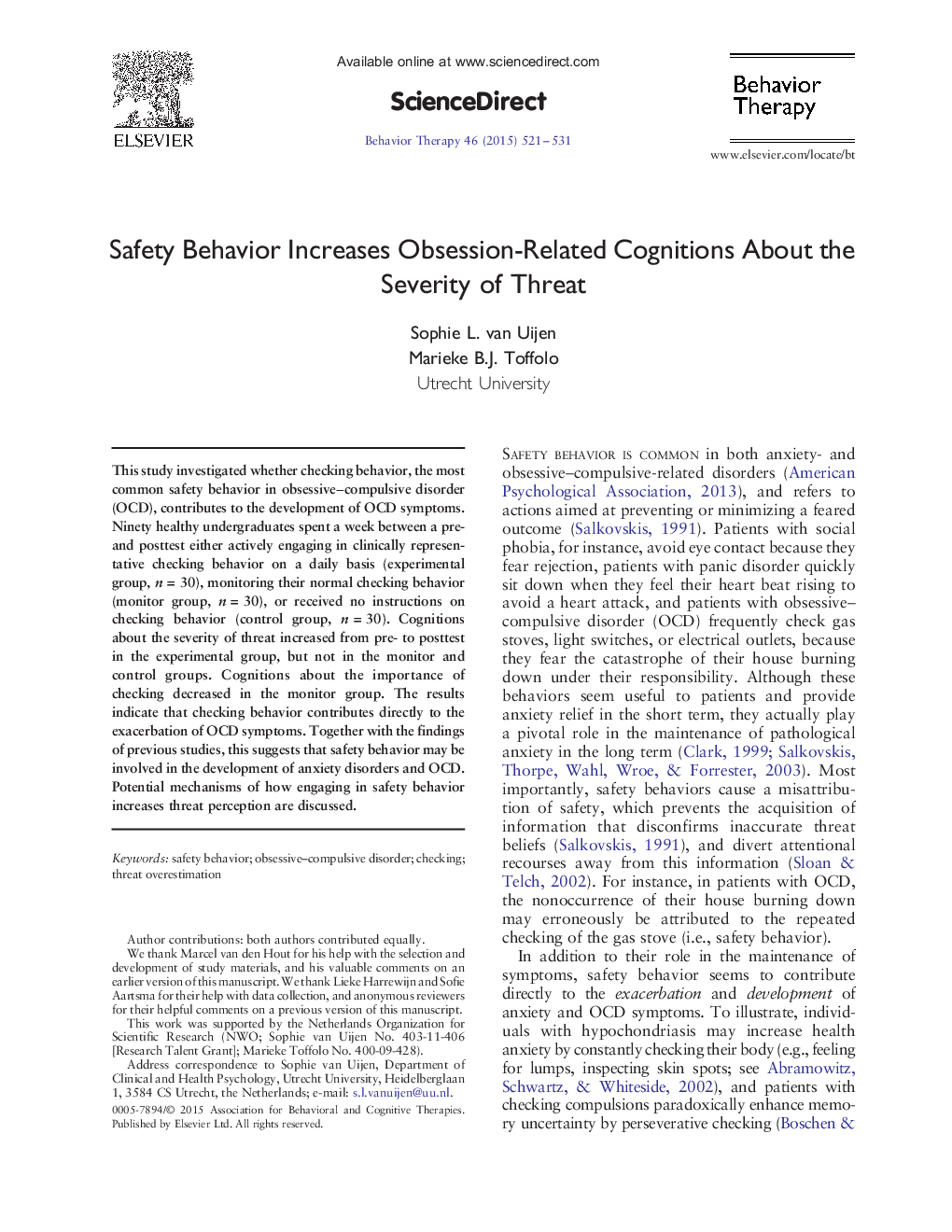| Article ID | Journal | Published Year | Pages | File Type |
|---|---|---|---|---|
| 901178 | Behavior Therapy | 2015 | 11 Pages |
•Safety behavior increased cognitions about the severity of threat•Monitoring daily checking decreased cognitions about the importance of checking•No effects were found on general obsessive beliefs and anxiety•Safety behavior may contribute directly to the exacerbation of OCD symptoms
This study investigated whether checking behavior, the most common safety behavior in obsessive–compulsive disorder (OCD), contributes to the development of OCD symptoms. Ninety healthy undergraduates spent a week between a pre- and posttest either actively engaging in clinically representative checking behavior on a daily basis (experimental group, n = 30), monitoring their normal checking behavior (monitor group, n = 30), or received no instructions on checking behavior (control group, n = 30). Cognitions about the severity of threat increased from pre- to posttest in the experimental group, but not in the monitor and control groups. Cognitions about the importance of checking decreased in the monitor group. The results indicate that checking behavior contributes directly to the exacerbation of OCD symptoms. Together with the findings of previous studies, this suggests that safety behavior may be involved in the development of anxiety disorders and OCD. Potential mechanisms of how engaging in safety behavior increases threat perception are discussed.
